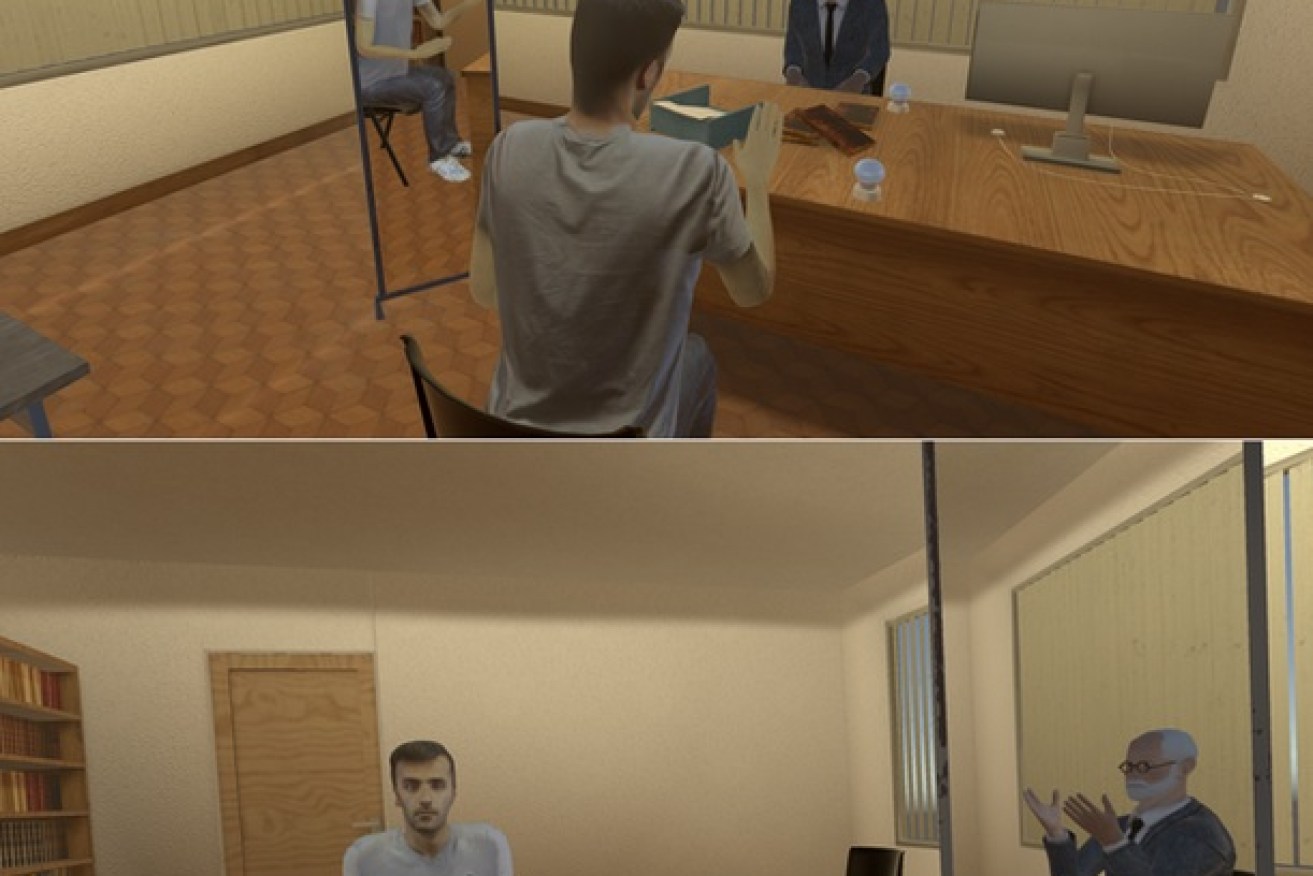Virtual reality: Talking to yourself in disguise can solve life’s little problems


Students shared a problem with a Sigmund Freud avatar – then entered Freud's body to resolve the issue. Photo: University of Barcelona
If you were to try and fix a momentary case of the blues or solve a personal problem, who would you be better off talking to? Yourself or Dr Sigmund Freud?
Spanish researchers, in a cheeky virtual reality experiment, suggest the better option is to do both.
And they say it works so well, that mental health clinicians could prescribe virtual reality Freud sessions as a low-cost answer to solving life’s minor problems – or as a way of practising healthier ways of thinking.
This takes a little unpacking
As the researchers, from the University of Barcelona (UB), observe: In general, people are more likely to give advice to a friend than to solve their own problems.
“Although we normally have a constant internal dialogue, our way of thinking, our history and our point of view makes it difficult for us to see our problems from an external perspective,” they write.
Instead, with friends, especially if it is a person we know well, it is easier for us to take a general view and help them find a solution to what emotionally ails them.
So what if you could share your problem – in a virtual reality space – with someone who doesn’t look like you? What about someone like Freud, the legendary father of psycho-analysis?
And then what if you adopted Freud’s image and voice and gave advice back to yourself? Would anything good come of it … or would you just go nuts?
The scientists had already answered some of these questions in previous studies – notably that when we adopt a different body using virtual reality, we change our behaviour, attitude and perception of things.
“We showed earlier that it is possible for people to talk to themselves as if they were another person, body swapping to two different avatars,” said Professor Mel Slater, a researcher at the Experimental Virtual Environments Lab for Neuroscience and Technology, a research group in the UB’s faculty of psychology.
In those experiments, the mood and happiness of participants improved, at least in the short term.
“However, we didn’t know whether this was due to simply the participant talking about their problem or whether the virtual body swapping really made a difference,” said Professor Slater, in a prepared statement.

Test subjects wore a virtual reality helmet and gloves and entered a consulting room, where they sat at a desk with the great Sigmund Freud. Photo: University of Barcelona
To answer this question, test subjects – wearing a virtual reality helmet and gloves – appeared as themselves in a virtual reality consulting room. There they could see an avatar of themselves when they looked into a mirror.
In the room, sitting at a desk they shared a problem with an avatar of Freud.
They then body-swapped to become Freud – and saw themselves as Freud in the mirror – while looking across the desk at their patient (their own image).
Freud’s voice was disguised – so as not to sound like the test subject – and create the illusion of further distance, as he gave his considered advice to his patient-self avatar.
This switching back and forth occurred as a real-time conversation between the two parties.
“They will see and hear their own likeness explaining the problem, and they see their virtual self as if this were another person. Now they themselves have become the friend (Freud) who is listening and trying to help,” Professor Slater said.
There was also a control group of subjects that spoke to the virtual Freud, but in that case Freud responded with pre-scripted questions and comments – and there was no body swapping.
One week after the completion of the experiment more than 80 per cent of participants in the body-swapping group reported a change with respect to their problem – compared to less than 50 per cent in the control group.
“We found that those in the body swapping group got better knowledge, understanding, control, and new ideas about their problem compared to the control group,” Professor Slater said.
Participants were guided by a clinical psychologist in how to formulate their problem, so researchers do not know whether this method could be used without this prior clinical advice.
However, they believe that this method could be a useful tool for clinicians.
“Now that virtual reality is available as a consumer product, with high quality at less than the cost of a good smartphone, this method could be widely used by clinicians, for example, by giving homework to their clients to carry out this type of method at home,” Professor Slater said.








